#quick implementation software
Explore tagged Tumblr posts
Text
Custom Software vs. Off-the-Shelf Solutions: What’s Best for Your Startup?
Struggling to choose between custom software and off-the-shelf solutions for your startup? Explore the pros and cons of each option in our comprehensive guide, and discover which approach best aligns with your business goals and budget.
#advantages of custom software#advantages of off-the-shelf solutions#business process automation#business software#competitive edge software#cost of custom software#custom software#custom software advantages#custom software disadvantages#custom vs. off-the-shelf software#disadvantages of off-the-shelf solutions#hybrid software approach#integration solutions#it consulting services#it solutions for startups#off-the-shelf software benefits#off-the-shelf solutions#quick implementation software#ready-made software solutions#security in software solutions#software customization#software development for startups#software development timeframe#software scalability#startup software solutions#tailor-made software#tech trends for startups#technology stack for startups#technology strategy#proprietary software vs off the shelf software
0 notes
Text
...devlog #1??? - mini BG3 VN
So I recently downloaded Renpy because I wanna learn how to code in my spare time and I figured I'd write about it here for both posterity & to record my process with it all!
The project I'm starting with will be quick and easy because 1) I really don't want to start with something huge 2) I have work & commissions to take care of and those will come first.
About the project:
If you've been following me you know I've gotten hugely into bg3 so I thought why not code a little scene where you get to meet my durge, Brigha! I'll put my goals and expectations under the cut. Here's my first renpy test ft. Wyll.
First of all, what the hell is Renpy? Very simply put, Renpy is a software that allows you to create visual novels. You can check it out (and even download it for free!) here.
The "mini VN" I'm working on will feature a scene in Act1 of how I imagine you'd meet and recruit (or not!) my durge if she were a companion in the game, featuring some neat little things and details that I will hopefully be able to implement.
This is what I want to put in:
Ability to input your character's name;
(royalty free) music playing in the bg;
Multiple dialogue choices with (very small) dialogue trees;
Perhaps some pop ups like perception checks or companion approval/disapproval;
Companion pop up comments, randomized in one instance towards the end;
Two endings.
It might seem like a lot and it probably is - I might cut a couple these to make sure I don't spend too much time getting the vn out there.
So far I have the first draft of the script ready and I'll probably leave it as is unless testers will point out inaccuracies or weird phrasing. Here is a little concept of how I imagine Brigha will be dressed when you meet her:

Sprite wise she'll probably be the only one to have a full body/expressions (to preserve my wrists) but I might also draw little simple headshots of the other companions for when they'll pop up to comment.
As for backgrounds I will spare myself and just grab screencaps from the game that I will blurry/apply effects to, just to make them look a bit more coeshive with the sprites.
This is all I have so far! The VN will be available to play for free on your browser once I'm done with it :) ETA undetermined since this is a free time project done for fun.
Wish me luck!
110 notes
·
View notes
Text
Hi, idk who's going to see this post or whatnot, but I had a lot of thoughts on a post I reblogged about AI that started to veer off the specific topic of the post, so I wanted to make my own.
Some background on me: I studied Psychology and Computer Science in college several years ago, with an interdisciplinary minor called Cognitive Science that joined the two with philosophy, linguistics, and multiple other fields. The core concept was to study human thinking and learning and its similarities to computer logic, and thus the courses I took touched frequently on learning algorithms, or "AI". This was of course before it became the successor to bitcoin as the next energy hungry grift, to be clear. Since then I've kept up on the topic, and coincidentally, my partner has gone into freelance data model training and correction. So while I'm not an expert, I have a LOT of thoughts on the current issue of AI.
I'll start off by saying that AI isn't a brand new technology, it, more properly known as learning algorithms, has been around in the linguistics, stats, biotech, and computer science worlds for over a decade or two. However, pre-ChatGPT learning algorithms were ground-up designed tools specialized for individual purposes, trained on a very specific data set, to make it as accurate to one thing as possible. Some time ago, data scientists found out that if you have a large enough data set on one specific kind of information, you can get a learning algorithm to become REALLY good at that one thing by giving it lots of feedback on right vs wrong answers. Right and wrong answers are nearly binary, which is exactly how computers are coded, so by implementing the psychological method of operant conditioning, reward and punishment, you can teach a program how to identify and replicate things with incredible accuracy. That's what makes it a good tool.
And a good tool it was and still is. Reverse image search? Learning algorithm based. Complex relationship analysis between words used in the study of language? Often uses learning algorithms to model relationships. Simulations of extinct animal movements and behaviors? Learning algorithms trained on anatomy and physics. So many features of modern technology and science either implement learning algorithms directly into the function or utilize information obtained with the help of complex computer algorithms.
But a tool in the hand of a craftsman can be a weapon in the hand of a murderer. Facial recognition software, drone targeting systems, multiple features of advanced surveillance tech in the world are learning algorithm trained. And even outside of authoritarian violence, learning algorithms in the hands of get-rich-quick minded Silicon Valley tech bro business majors can be used extremely unethically. All AI art programs that exist right now are trained from illegally sourced art scraped from the web, and ChatGPT (and similar derived models) is trained on millions of unconsenting authors' works, be they professional, academic, or personal writing. To people in countries targeted by the US War Machine and artists the world over, these unethical uses of this technology are a major threat.
Further, it's well known now that AI art and especially ChatGPT are MAJOR power-hogs. This, however, is not inherent to learning algorithms / AI, but is rather a product of the size, runtime, and inefficiency of these models. While I don't know much about the efficiency issues of AI "art" programs, as I haven't used any since the days of "imaginary horses" trended and the software was contained to a university server room with a limited training set, I do know that ChatGPT is internally bloated to all hell. Remember what I said about specialization earlier? ChatGPT throws that out the window. Because they want to market ChatGPT as being able to do anything, the people running the model just cram it with as much as they can get their hands on, and yes, much of that is just scraped from the web without the knowledge or consent of those who have published it. So rather than being really good at one thing, the owners of ChatGPT want it to be infinitely good, infinitely knowledgeable, and infinitely running. So the algorithm is never shut off, it's constantly taking inputs and processing outputs with a neural network of unnecessary size.
Now this part is probably going to be controversial, but I genuinely do not care if you use ChatGPT, in specific use cases. I'll get to why in a moment, but first let me clarify what use cases. It is never ethical to use ChatGPT to write papers or published fiction (be it for profit or not); this is why I also fullstop oppose the use of publicly available gen AI in making "art". I say publicly available because, going back to my statement on specific models made for single project use, lighting, shading, and special effects in many 3D animated productions use specially trained learning algorithms to achieve the complex results seen in the finished production. Famously, the Spider-verse films use a specially trained in-house AI to replicate the exact look of comic book shading, using ethically sources examples to build a training set from the ground up, the unfortunately-now-old-fashioned way. The issue with gen AI in written and visual art is that the publicly available, always online algorithms are unethically designed and unethically run, because the decision makers behind them are not restricted enough by laws in place.
So that actually leads into why I don't give a shit if you use ChatGPT if you're not using it as a plagiarism machine. Fact of the matter is, there is no way ChatGPT is going to crumble until legislation comes into effect that illegalizes and cracks down on its practices. The public, free userbase worldwide is such a drop in the bucket of its serverload compared to the real way ChatGPT stays afloat: licensing its models to businesses with monthly subscriptions. I mean this sincerely, based on what little I can find about ChatGPT's corporate subscription model, THAT is the actual lifeline keeping it running the way it is. Individual visitor traffic worldwide could suddenly stop overnight and wouldn't affect ChatGPT's bottom line. So I don't care if you, I, or anyone else uses the website because until the US or EU governments act to explicitly ban ChatGPT and other gen AI business' shady practices, they are all only going to continue to stick around profit from big business contracts. So long as you do not give them money or sing their praises, you aren't doing any actual harm.
If you do insist on using ChatGPT after everything I've said, here's some advice I've gathered from testing the algorithm to avoid misinformation:
If you feel you must use it as a sounding board for figuring out personal mental or physical health problems like I've seen some people doing when they can't afford actual help, do not approach it conversationally in the first person. Speak in the third person as if you are talking about someone else entirely, and exclusively note factual information on observations, symptoms, and diagnoses. This is because where ChatGPT draws its information from depends on the style of writing provided. If you try to be as dry and clinical as possible, and request links to studies, you should get dry and clinical information in return. This approach also serves to divorce yourself mentally from the information discussed, making it less likely you'll latch onto anything. Speaking casually will likely target unprofessional sources.
Do not ask for citations, ask for links to relevant articles. ChatGPT is capable of generating links to actual websites in its database, but if asked to provide citations, it will replicate the structure of academic citations, and will very likely hallucinate at least one piece of information. It also does not help that these citations also will often be for papers not publicly available and will not include links.
ChatGPT is at its core a language association and logical analysis software, so naturally its best purposes are for analyzing written works for tone, summarizing information, and providing examples of programming. It's partially coded in python, so examples of Python and Java code I've tested come out 100% accurate. Complex Google Sheets formulas however are often finicky, as it often struggles with proper nesting orders of formulas.
Expanding off of that, if you think of the software as an input-output machine, you will get best results. Problems that do not have clear input information or clear solutions, such as open ended questions, will often net inconsistent and errant results.
Commands are better than questions when it comes to asking it to do something. If you think of it like programming, then it will respond like programming most of the time.
Most of all, do not engage it as a person. It's not a person, it's just an algorithm that is trained to mimic speech and is coded to respond in courteous, subservient responses. The less you try and get social interaction out of ChatGPT, the less likely it will be to just make shit up because it sounds right.
Anyway, TL;DR:
AI is just a tool and nothing more at its core. It is not synonymous with its worse uses, and is not going to disappear. Its worst offenders will not fold or change until legislation cracks down on it, and we, the majority users of the internet, are not its primary consumer. Use of AI to substitute art (written and visual) with blended up art of others is abhorrent, but use of a freely available algorithm for personal analyticsl use is relatively harmless so long as you aren't paying them.
We need to urge legislators the world over to crack down on the methods these companies are using to obtain their training data, but at the same time people need to understand that this technology IS useful and both can and has been used for good. I urge people to understand that learning algorithms are not one and the same with theft just because the biggest ones available to the public have widely used theft to cut corners. So long as computers continue to exist, algorithmic problem-solving and generative algorithms are going to continue to exist as they are the logical conclusion of increasingly complex computer systems. Let's just make sure the future of the technology is not defined by the way things are now.
#kanguin original#ai#gen ai#generative algorithms#learning algorithms#llm#large language model#long post
7 notes
·
View notes
Text
Universalaigroup.com review Trading Platform
When choosing a forex broker, traders look for security, reliability, and user experience. Nobody wants to risk their money with an unregulated or questionable platform. That’s why today, we’re taking a deep dive into universalaigroup.com reviews, analyzing its regulation, reputation, trading conditions, and user feedback.
A good broker isn’t just about flashy promises—it needs a strong foundation, proper licensing, positive trader reviews, and a seamless trading experience. So, does universalaigroup.com review check all the right boxes? Let’s find out. We’re going to break it down, step by step.
Universalaigroup.com Trading Platform: Versatility and Convenience
The trading platform offered by universalaigroup.com reviews includes a variety of options to suit different trading needs:
WebTrader Platform – A browser-based platform that allows users to trade without downloading software. This is a flexible option, ideal for those who prefer quick access from different devices.
Tablet Trader – Designed for tablets, this platform ensures smooth trading on larger touchscreens, making it convenient for traders who want mobility without compromising usability.
Mobile Trader – A smartphone-optimized platform, allowing users to trade on the go. This is particularly useful for those who want to monitor the market and execute trades anytime, anywhere.
Having multiple platform options like these indicates that universalaigroup.com review is catering to both professional and casual traders. A strong web-based and mobile infrastructure is a good sign of legitimacy because unreliable brokers often neglect user-friendly trading solutions. Would a broker that isn’t serious about its clients invest in such a well-rounded platform? We think not!
Universalaigroup.com: A Strong Foundation from the Start
One of the key indicators of a legitimate broker is the consistency between its establishment date and the date of domain registration. For universalaigroup.com reviews, the domain was purchased on December 7, 2020, while the company itself was officially established in 2022.
This alignment is crucial. Why? Because when a broker secures its domain well before launching, it shows a well-thought-out business plan rather than a hastily created operation. Scammers often set up domains at the last minute, trying to make a quick profit before disappearing. But here, we see a timeline that makes sense—the company took the time to prepare, build its infrastructure, and enter the market strategically.

Universalaigroup.com: Strong Regulatory Backing
One of the most important aspects when evaluating a broker’s legitimacy is its regulation. universalaigroup.com reviews operates under the FCA (Financial Conduct Authority), a top-tier regulatory body known for its strict standards and investor protection measures.
The FCA license isn’t easy to obtain. It requires brokers to meet rigorous financial requirements, ensure fair trading conditions, and implement strict anti-money laundering measures. Only companies with a transparent business model and financial stability get this approval. And what does this tell us? A broker under FCA regulation isn’t just legal—it’s one of the most secure options in the industry.
Brokers without strong oversight often operate in the shadows, avoiding strict compliance rules. But universalaigroup.com review has passed the high standards of one of the toughest regulators. If there was ever a sign of trustworthiness in the forex world, this is it.
Universalaigroup.com: What Do Traders Say?
A broker’s reputation is best reflected in its user reviews. universalaigroup.com review has a Trustpilot rating of 3.9, with 6 reviews so far.
Now, let’s break it down. While a rating of 4.0 or higher is considered excellent in the trading industry, a 3.9 is still close and shows a generally positive sentiment. But what really matters is the number of reviews. Since there are only 6 reviews, the score isn’t fully representative yet. Why? Because early reviews can fluctuate significantly with just a few ratings.
Here’s the key takeaway: a developing broker with a near-4-star rating is a good sign. As more traders use the platform, we’ll get an even clearer picture. For now, this suggests that traders have had a mostly positive experience, which is a solid indicator of trustworthiness.
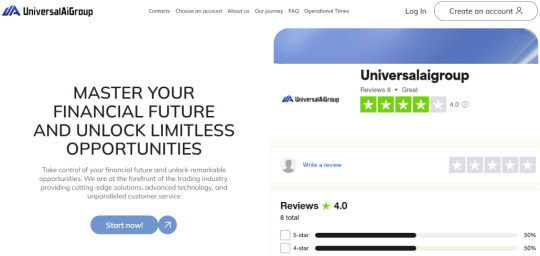
Is universalaigroup.com review a Legit Broker?
After thoroughly analyzing universalaigroup.com reviews, the evidence strongly points to its legitimacy. Let’s quickly recap why:
✅ Domain History Aligns with Legitimacy – The domain was purchased two years before the company’s official launch, signaling a well-planned business rather than a rushed scam. ✅ Regulated by FCA – One of the most respected financial regulators, ensuring transparency, security, and fair trading conditions. ✅ Decent Trustpilot Rating – With a 3.9-star score, the early feedback from users suggests a mostly positive trading experience. As more traders leave reviews, this will give us an even clearer picture. ✅ Multiple Trading Platforms – From WebTrader to Mobile and Tablet trading, the broker offers flexibility for different types of traders. ✅ Fast Deposits and Withdrawals – Transactions are instant or take just a few hours, with zero commission fees, which is a major plus. ✅ User-Friendly Support and App – The app is available on App Store with a solid 4.8-star rating, proving its reliability for mobile trading.
Would an unreliable broker go through the trouble of obtaining an FCA license, investing in user-friendly technology, and ensuring seamless payment options? We highly doubt it. universalaigroup.com review presents itself as a serious and trustworthy platform for traders looking for a regulated and flexible forex experience.
7 notes
·
View notes
Text

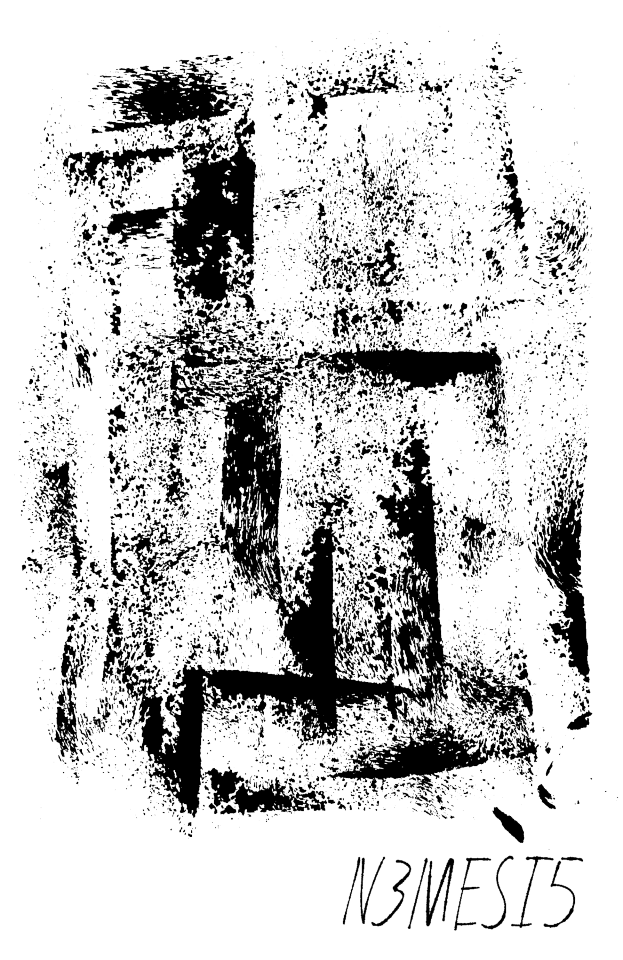

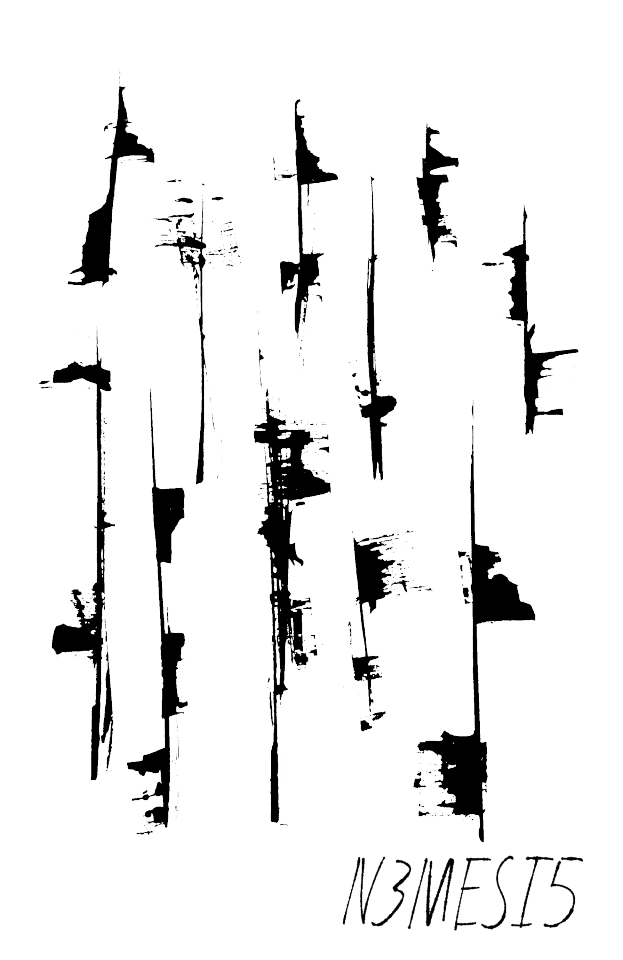
Here are the assets I have promised! + a quick guide! (Sorry It took me embarrassingly long, I was too busy being sad) If I have time, I'll try to make a simple tutorial to guide you on how to make something like this, but for now you need to know the essentials. -I use Clip studio paint to extract my textures, on the menu bar go to "Select" and "Select Color Gamut" and adjust margin of error UNTIL you extract the texture WITHOUT any weird borders. Add a fill layer different from the paper so you'll see if you did it RIGHT! and then extract as transparent png :3

-Tools: Palette knives, sponges, or anything that have texture or can be dragged across or pressed down.
-A palette or anything you can dip your tools on, I use a very small dining plate because it doesn't soak sponges too much.
-Paper: I used an A4 paper, anything can work as long it's blank and isn't in the same spectrum as a color you're using: Like Grey paper and black ink :( Make sure you have PLENTY! Make sure it's FODDER PAPER you can easily replace, a looot of trial and error will head your way.
-I recommend black ink, with your art software you can change the colors with ease. Ink makes the small textures pop much often and great with sponges. I never tried paint but I feel like they'd be tooo thick and 'cancel' small textures.
-On your work table, add some newspaper or any protective layer and a large plastic container to keep the tools and the palette. It will get MESSY if you're clumsy as me. Bring an apron too as an extra (which I don't have! and still went on and wore a white t-shirt)
-When you're about to take a photo keep in mind REFLECTIONS are a thing, indirect lighting is key. -They're not meant to be layered on top of art, but to be cut up with a lasso tool, placed on edges and then colored with the background to add "Scratchiness" to the drawing's edges similar to Yoji Shinkawa's art. There might be better ways to implement this depending on the software you folks use.
18 notes
·
View notes
Text
Procedural Cyclic Slash
Get the code for this shader here -> https://godotshaders.com/shader/procedural-cyclic-slash/
This is a really jank shader, but it looks pretty nice when the values are just right. So that's what this post is for! I'll help you with understanding the uniforms and value setup and leave some general tips so you can experiment easily on your own.
Quick Setup
Here is a quick rundown on how to get something similar to the video above:
Create a MeshInstance3D node and set the mesh to QuadMesh
Apply the shader as a Material Override (GeometryInstance3D -> Geometry)
Set these values:
Animation.Derive_Progress = -1 Animation.Time_Scale = 0.25 Shape.Rotate_All = 285 Shape.Noise = - New NoiseTexture2D - - Width = 512 - - Height = 128 - - Seamless = True - - Noise = - - - New FastNoiseLite - - - - Noise_Type = Cellular - - - - Fractal.Gain = 4 - - - - Cellular.Distance_Function = Manhattan Shape.Width_Gradient_Mask = - New GradientTexture1D - - Gradient = - - - New Gradient - - - - Offsets: 0.2, 0.5, 0.52 - - - - Colors: #FFFFFF, #000000, #FFFFFF Shape.Length_Gradient_Mask = - New GradientTexture1D - - Gradient = - - - New Gradient - - - - Offsets: 0.25, 0.4, 0.6, 0.65, 0.7 - - - - Colors: #FFFFFF, #7F7F7F, #000000, #7F7F7F, #FFFFFF Shape.Highlight = - New GradientTexture1D - - Gradient = - - - New Gradient - - - - Offsets: 0.5, 0.52, 0.54 - - - - Colors: #000000, #FFFFFF, #000000 Coloring.Color_Lookup = - New GradientTexture1D - - Gradient = - - - New Gradient - - - - Offsets: 0.0, 0.1, 0.2 - - - - Colors: #BF40BF, #008080, #ADD8E6
Overview
This shader works by taking a noise texture and wrapping it around the center point of UV1. The curved noise texture is then masked twice to set its width and "length" and an additional texture is applied to add a highlight effect. The shader uses values of gray, a lookup texture, and UV.x to apply colours. Lastly, motion is created by shifting the UV sample of the original noise texture and running the combined grayscale texture through a smooth step function to determine its alpha. This is a text-based shader written in Godot's Shading Language. Sorry, I can't help you implement it in Unity or some other engine or software. --
Animation Uniforms
The Progress uniform sets what point in time the shader is in. This only works when the Derive Progress uniform is set to (0). You can pretty much use the progress uniform to scrub through the shader's animation. If you set the progress value in code or through an animation player, you can control the animation as you like. Derive Progress changes what drives the shader's animation. If set to (-1), TIME will progress the animation. If it animates too quickly, you can use Time Scale to speed it up or slow it down. If set to (1) the particle LIFETIME will progress the animation. This is useful if you plan to set this shader as the material of a particle in a GPUParticles3D or CPUParticles3D. Ease Progress gives you a bit of control over how the shader's animation progresses if you are driving it with TIME or LIFETIME. When set to (0) no easing will occur. (-1) Will ease in exponentially and (1) Will ease out exponentially, but if you have the chops you can tweak this by changing the functions in the shader code. Time Scale alters the speed of the animation when Derive Progress is set to (-1). Anim Rot Amt controls how much the shader rotates as it animates. Set it to (0) if you want the effect to remain in the same place instead of rotating around the center of UV1. This value is put through an easing function, so it doesn't adjust linearly. I personally, wouldn't try setting this to anything other than (0) or (1). --
Shape Uniforms
Zoom controls the size of the effect on the quad. The value is interpreted inversely, so setting a larger value will make it smaller. The effect will repeat if you set this value above (1). Rotate All lets you rotate the effect on the quad. Use degrees. Base Noise generates the main shape for this effect. You can use any type of noise and I encourage you to experiment. Just make sure it's seamless so you don't get any odd artifacts. By setting the noise to be wider than it is tall, you can stretch out the shapes it makes which I think better resembles a slash. Decreasing the dimensions of the noise can lead to bigger streak blobs and softer-looking shapes depending on the noise used. I'd look into this if you want a more stylized/cartoon-looking effect.

Width Gradient Mask masks the Base Noise in a way that controls the width of the final effect. Like Base Noise this will be wrapped around the center point of UV1 so I suggest using a GradientTexture1D. You can do some cool things here if you're willing to experiment (and possibly alter the code) just make sure this is set to a grayscale image. The way I wrote the math dictates that darker colours will be kept and light colours will clip, so use white to control what to cut out and black to control what to keep. A gradient that transitions from white to black back to white is a good place to start.

Length Gradient Mask masks the Base Noise in a way that controls the "length" of the final effect. This also controls how it animates sorta. I can't really explain it, but how this overlays the noise will alter how the smooth step function works... I think. White denotes the edges and Black the center. If you use a gradient here, moving the white values closer to the center can help with shaping. I also suggest using gray so you can better shape the length of the effect.

Highlight is overlayed on the effect. like everything else, it is wrapped around the center point of UV1. A thin white stripe works best. Unlike the other textures this one is played straight, so black won't appear and white will. Moving the white stripe closer to the right edge of the gradient will move the highlight effect to the outside of the slash, left will move it inside. I like to set it so it's a bit closer to the right so it appears on the outer edge. If you don't want a highlight at all leave this uniform empty. --
Coloring Uniforms
Emission Strength controls how much it glows. If it doesn't glow in the editor, add a world environment node and enable glow, you will also need this in your game scenes fyi. Mix Strength controls how much the Color Lookup is applied to the effect. If Color Lookup is applied, decreasing this value will give a darker appearance. At (0), the effect (excluding the highlight) will appear black. You can add extra glow by increasing this above (1).

Color Lookup is used to color the effect. I think I screwed up the math, so just ensure the colors you want the shader to sample from are close to the left side of what you set here. Three colors is pretty nice, I like to put darker colors closer to the left side and lighter ones to the right. --
Final Notes
Sorry for this lengthy post. I've had issues before where a shader I found on GodotShaders was a bit obtuse and I didn't want others to run into that with this one. I've spent quite some time trying to figure this out but I still feel this is a pretty meh effect. I think I need to look into how people animate shaders using a static image and clipping/stepping/smooth stepping it. If you have any good resources for shaders I'd be interested to hear about them. I'd prefer not to get any articles about visual or node-based shaders since I keep fumbling how to convert some nodes into functions or what sorta math is going on, but at this rate, I'll take whatever I can get lol. Hopefully, this shader saves you some time or teaches you something new! If you have any questions (and I can answer them) don't hesitate to ask. However, I'd prefer if you contacted me on Discord. I'm in Godot Café, Godot Engine, and the Godot Effects and Shaders discord servers as (@)Aiwi.
17 notes
·
View notes
Text
Everyone's Running From Something (ch. 4)
A Baldur's Gate 3 University Professor AU
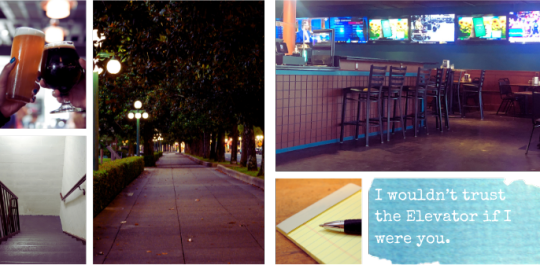
Rating: M
Quick Summary: Astarion and Gale are two University English professors precariously mentoring a troubled 19-year-old and falling in love.
💖Main Pairing : BloodWeave,(Astarion/Gale) 💕Side Pairings: Shadowheart/Nocturne, Karlach/Dammon, Wyll/The Dark Urge, Tav/Tav 💔Past Pairings: Gale/Mystra, Astarion/Sebastian, Astarion/Tav
<=Previous Chapter | Master List | Ao3 | Next Chapter =>
**Please see Master List Entry for Full Content Warnings**
⏰Chapter Warning⏰ None
The all-hands meeting for the beginning of the semester went the same way every all-hands meeting at the beginning of semesters go. Every professor and TA in a humanities field got squeezed into a conference room that wasn’t quite big enough, had a powered sugar donut or a couple cubes of assorted melon with half a Styrofoam cup of burnt coffee, and listened to the departmental dean give an un-rousing speech about being on the same page with the other departments. Then he talked at nauseam about school policies and ran a quick training session over a new time-tracking software that would be implemented in 3 weeks’ time.
Gale scribbled down notes on a big yellow legal pad and tried to ignore Jen and Astarion, making faces at each other as he wrote. He’d been in academia long enough to know they’d both be crying to him in a few weeks when they messed up their timecards.
As the meeting drew to a close, a dapper man with slicked-back chestnut hair and a car salesman smile stepped into the room. Astarion went stiff like a cat puffing up to defend itself. The dapper man just gave him a plasticky, knowing smile that didn’t quite reach his eyes.
The dean perked up a bit as he noticed the man lingering in the back of the room. “Raphael, what a pleasant surprise! I had no idea you would be joining us,” he exclaimed, “We were just finishing up. Are there any words of wisdom you’d like to impart to our humanities faculty?”
“Oh, nothing so important,” Raphael said, and suddenly Gale understood why Astarion was so on edge. Everything about the man oozed with a disingenuous charm that made Gale’s hair stand on end. “I just realized I forgot to send out a notice about the upcoming donor gala the next coming Friday. I realized you were all in a meeting right now, so I thought I’d pop in and remind you in person.”
Raphael’s eyes landed directly on Astarion as he spoke his next sentence. “There is a reasonable expectation that faculty attend these events.” Out of the corner of his eye, Gale saw Astarion’s expression go steely. “After all, we want to show up and show out for the people who allow us to do so much.”
“Of Course!” The dean chirped. “I know I wouldn’t miss it for the world.”
The meeting adjourned, and Astarion immediately made a break for the door. Gale hurriedly gathered his things in one arm, instinctually following after the only person in the room he really knew, like a baby duck.
Raphael stepped into Astarion’s path before he could get out of the meeting room. “Ah, we meet again, Dr. Ancunín!” Raphael’s voice dripped with sugary contempt. “I will see you at the donor gala, won’t I?”
“Perhaps. Are you thinking about calling in that favor I owe you?” Astarion’s voice was clipped, his face unnervingly blank.
“I think I’d like to wait on that a little longer, but I would like you there in case I change my mind.” Before Astarion could respond, Raphael’s gaze slid off him and onto- “Dr. Dekarios! Wonderful to see you. Are you settling in well?” He reached out a hand to him.
Gale stuffed his legal pad into his work so he could shake Raphael’s hand. “Exceptionally well!” he replied. “Everyone’s done their utmost to make me feel very welcome!”
“Oh, you don’t have to fib on your new colleagues’ account, Dr. Dekarios. I’m more than familiar with how surly certain members of the English department can get.” Raphael laughed congenially, but Astarion shot him a poisonous look.
“I’m not lying to you, sir,” Gale replied. “Astarion’s been nothing but professional.”
“Well, perhaps he’s going a bit soft.” There was a flash of something dangerous behind his eyes. He turned to Astarion. “I shall see you next Friday.” It was a command more than a farewell, but he walked away all the same.
Astarion muttered under his breath. Gale didn’t catch what he said but could make an educated guess. Astarion exhaled a deep breath like he was equalizing pressure.
He turned to Gale and said, “Thank you.”
Gale blinked. “Of course.”
Astarion opened his mouth to say something else, but the words couldn’t or wouldn’t form.
Shadowheart stepped in between them, too concerned with responding to a text message to notice the weird tension. “Karlach wants to get drinks.” She said. “She got stuck in traffic and doesn’t want to drive all the way down here for nothing.”
“Roveer’s?” Astarion asked, a very weary resignation in his voice.
“Yes, probably.”
“Nothing like running into your students at a sports bar a week before classes start…” Astarion grumbled. “Fine. Let me finish here, and I’ll meet you there in, oh… 15 minutes.” He turned to Gale. “Are you coming?”
“To the office?”
Astarion gave him a perplexed look. “To the bar.” He clarified. “You should take the opportunity to meet Karlach.”
Gale could feel himself going bright red as Shadowheart snickered. “Right. Yes. I would love to.” He replied.
“I’ll let Karlach know you’re coming. She’ll be thrilled.” Shadowheart replied, giving Gale a warm smile. “I’ll go lock up. See you in a bit.”
“Come on then.” Astarion replied, nodding for Gale to follow him.
***
The all-hand meeting was on the third floor, so by the time they’d returned to the basement and back up a floor to leave, Gale was starting to fear his knees wouldn’t survive the week- let alone the semester. “There has to be an elevator in this building.” Gale huffed and puffed as he hoofed it up the last flight of stairs. He didn’t want his new colleague’s first impression of him to be of him on his hands and knees wheezing. “I can’t take much more of this…”
“There is, but personally I don’t like chancing it unless I really don’t want to be in a meeting.” Astarion slowed to a stop at the top of the stairs to wait for him. He didn’t seem any worse for wear, but he also seemed much trimmer than Gale was- or at the very least, his shirt accentuated the pleasing nip of his waist. Gale wondered if Astarion was a swimmer. “A history adjunct got stuck in it overnight a few years past, and it still reeks a little bit when it gets hot enough.”
Gale laughed, but Astarion very pointedly did not.
The conversation lulled a little bit.
“Do you mind if I ask you something?” Gale asked.
“That entirely depends on what you want to ask.” Astarion stepped into the hallway, taking a moment to slip into his grey wool peacoat before they ventured outside.
“Raphael, is he always…”
“Such an ass?” Astarion finished his thought. Gale wouldn’t have used such a strong word, but Astarion had gotten the spirit of the question right, at least. “He’s usually much worse.”
“Oh?”
“He’s a glorified middleman with too much power and time on his hands.” Astarion scoffed. “He enjoys putting things in people’s way and watching them try to wriggle their way out of problems he created. My advice is to deal with him as little as possible.”
“Is he who you went to talk to earlier?”
Astarion gave him a poisonous look that only confirmed Gale’s suspicion.
They walked across campus in uneasy silence. The bitterly cold wind whipped and whistled, tossing the last remnants of fall leaves across the concourse. The few student residents who’d gotten in that morning had either decided to hold up in their rooms or were enjoying their free time in more exciting corners of town. Gale found himself wondering what Xenia was doing... He hoped she wasn’t all alone in an empty dorm.
“Does Xenia have many friends?” Gale asked as they approached a crosswalk leading to the block of shops across from campus.
“Hm?” Astarion tapped the pedestrian-call button, which commanded them to ‘wait!’ in a mechanical voice. “I think she probably has more friends than she realizes she does. Kids like her tend to think they’re alone in everything.”
“Poor kid… Seems like she’s been through enough.” Gale sighed. There was something heartbreaking in the phrase ‘kids like her.’ It was sad to think that there were more 19-year-olds out there carrying emotional burdens far too heavy for their age- sadder still to think that if there weren’t, then Xenia would be alone.
“She’ll figure herself out eventually. She’s not like…” Astarion paused, seemingly a little shocked by what he was about to say. He leveled a wary glance at Gale. “She’s not a quitter, I mean.”
“I’m sure she’s not. I just hope she doesn’t run herself ragged.” The walk light flashed, and they hurried across the street.
***
They were comedically out of place in Roveer’s Roadhouse. A group of grown adults in Oxford dress crowding around a sticky Bud-Lit branded high top surrounded by a bevy of flatscreen monitors playing every sports broadcast under the sun. Shadowheart was already nursing a syrupy cocktail out of a chipped margarita glass.
An extremely tall woman with a red tipped mohawk and smiling eyes bounded over to Gale and clapped a firmly friendly hand on his shoulder. “You’re the new Adjunct, I take it?” She asked. “I’m Karlach, Professor Cliffgate, if you’re nasty.”
“Gale Dekarios.” He reached out to shake her hand. She fist-bumped him instead, and Gale got a glimpse of a nasty burn scar peeking out from the sleeve of her jacket. “It’s a pleasure!”
“Aw, I have a great-aunt named Gale!” Karlach replied.
“I get that a lot…” Gale sighed. “I like your hair!”
“Thanks!” Karlach tussled her own hair. “Told my kiddos they could pick what color I dyed it if they all passed their benchmarks.”
“Does Balduran give benchmarks?”
“Oh, no. Teaching university is my side gig,” Karlach replied. “I’m actually a full-time middle school teacher.”
A spindly girl with bleach-blonde hair pulled into space buns sidled up to the table, clutching a notepad. “Can I take your order?” She seemed quite put upon being asked to do actual work on a slow day.
“Vodka Soda,” Astarion replied, holding his ID out to the server.
She took it and dropped it in her apron, jotted something down on her notepad, and turned to Gale with an expectant look.
“I’ll, uh, take a Corona,” Gale replied. He’d never ordered a Corona in his life, but it seemed like an acceptable ‘getting drinks with colleagues’ kind of an order.
The server stood there staring at him a moment long before she asked, “ID?”
“Oh, um…” Gale patted for his wallet and realized he left it in his desk drawer. “I didn’t realize I would need it…”
“You didn’t realize you’d need an ID at a college bar?” Astarion asked dryly as he turned to the server. “Just put it on my tab.”
The server nodded and walked away without asking if they needed anything else.
“Wow Gale, just one day on the job, and you’re already bumming free drinks off the department chair.” Shadowheart teased. She took a sip of her drink crinkling her nose at the taste.
Gale flustered. “I-I was going to pay with my phone, I swear! I wasn’t planning this.”
“Relax. We’re not so underpaid that I can’t afford to buy you one beer.” Astarion rolled his eyes. “You can return the favor when you get your first paycheck.”
Gale blushed. “Alright.”
The server brought them their drinks without another word, then plopped down at the end of the bar to scroll on her phone. Gale pushed the lime through the neck of his beer bottle and watched it fizz as it sank to the bottom of the dubiously golden liquid.
“So, did I miss anything important at the all-hands?” Karlach asked idly, stirring her bourbon and coke.
“You know you didn’t,” Shadowheart replied. “We’re changing timecard systems, and Raphael and Astarion are in another one of their weird power struggles-there, I saved you an hour and a half.”
Karlach’s eyes lit up, and she turned towards Astarion. “Before the semester even starts?” There was a conspiratorial glee in her voice. “What the fuck could he have possibly done this time?”
“Why spoil the mood by ruminating on that rat bastard?” Astarion said. He picked the lemon slice out of his drink and laid it on a napkin. “I’ll tell you later.”
“Fair.” Karlach shrugged. She turned back to Gale and fixed him with a warm smile. “So, Gale, what brings you to the wonderful world of higher education?”
Gale had thought a lot about what he would tell people when they asked him why he wanted to teach college. He’d written little speeches in the shower about the joys of teaching language and the satisfaction of helping students reach their goal, but sitting in a group of other English professors, that suddenly all felt very trite.
“I was a public librarian, but I had to step away from my last position when I got divorced.” He admitted. “I found a job at a community college teaching database management, and I realized I’d just always missed teaching.” He took a long pull of his beer. The sour of the lime battled with the bitterness of the beer on his tongue.
“Library science might be a harder industry to break into than academia. It must have been tough to leave that behind.” Astarion mused.
“I do miss it terribly sometimes… but my ex helped me get into graduate school and got me my first library job. If I stayed, I would never be able to make anything that was truly mine.” Gale sighed. He could see the wheels spinning in Shadowheart’s head as she tried to figure out his age.
“You talk like you’re as old as this bag of bone,” Karlach pointed a thumb at Astarion, who glared daggers at her. “But there’s no way you’re that old.”
“I’m 35.” Gale clarified.
“That’s a little bit older than I thought, but still nowhere near as old as Astarion,” Shadowheart said.
“You are barely two years younger than me.” Astarion snapped.
“Barely a decade older than Gale, too.” Shadowheart shot back.
Astarion rolled his eyes and muttered something into his drink. “Did you go to get your master’s straight out of undergrad?” he asked.
“Yes, why?”
Astarion shrugged. “That’s just quite young to be with someone that well-established in their field.”
“Oh, we didn’t get together until I graduated.” That wasn’t entirely true. They didn’t get together publicly until he graduated. He didn’t know why he was still defending Mystra. It wasn’t like any of his new colleagues would ever meet her.
“I wasn’t trying to imply anything…” Astarion lied.
“Of course not.”
They both took a sip of their drink, holding awkward eye contact.
“Well, here’s to making something for yourself then,” Shadowheart said, holding her drink out to Gale for a cheers.
Gale clinked the neck of his beer bottle against her glass. “I’ll drink to that.”
#bg3#bg3 fanfiction#bloodweave#mat-write#bg3 astarion#bg3 gale#bg3 shadowheart#bg3 raphael#bg3 karlach#baldur's gate 3#baldur's gate 3 fanfiction#ao3 fanfic#ao3 link#astarion#gale of waterdeep#shadowheart#karlach#baldur's gate 3 au#bg3 professor au#professor dekarios
35 notes
·
View notes
Note
If the Home program ever closes, do they get the “atom by atom” feeling Coomer described in HLVRAI? Did they find a way around that? I remember you said somewhere that the Home program always stays running on the computer, but it would be impossible for it to keep it running for several years on end without atleast one accident happening. Especially since you said that Benry changing form has made the program crash a few times.
A valid concern. Thankfully, a sudden crash wouldn't cause that Atom By Atom effect. It's not super comforting to describe it as a quick and easy cessation of existence, but that's what it is. Awake one minute, gone the next, and then waking up in a designated spawn point (bedroom).
A proper shutdown/closure is different. Even though that's the ideal way to close the software to install updates and such, it's not pleasant. The world is unloaded before the consciousnesses inside of it are put away. Even their bodies are gone before they are. Thankfully, the pain of this is mostly emotional, so if the AIs are already asleep they may just feel a tingle.
At one of the Admin Club Meetings, there was a proposal made to implement a sort of "kill switch" to automatically knock out everyone in the program by default as the first step in the shutdown routine. Gordon resisted the idea at first, as having a subroutine on hand that makes all his friends lose consciousness sounds like supervillain shit. Darnold was able to argue a strong case against Gordon, as while the idea made him feel bad, Gordon wouldn't be the one affected. They ended up bringing it to a public vote that ended up passing after a great deal of discussion. And now you know how pol o' tics work here
23 notes
·
View notes
Text
Custom vs off-the-shelf ServiceNow integration, Which is right for you?
ServiceNow Integration Services
When integrating ServiceNow into your IT ecosystem, one of the first significant decisions is whether to opt for a custom ServiceNow integration or utilize an off-the-shelf solution. Each option has its pros and cons, and the right choice or selection depends on your business goals, budget, and technical needs and set particular objectives.
What Is Off-the-Shelf ServiceNow Integration?
Off-the-shelf ServiceNow alignment and implementation refers to pre-built connectors and plugins with added resources designed to work with popular software tools and settings. These integrations are ready-made, tested, and supported by ServiceNow or third-party vendors and providers. They are entirely set and preferred for businesses that need quick deployment and have standard and set parameters for their operations and workflows.
Benefits:
Faster implementation
Lower upfront cost
Less technical complexity
Vendor support available
However, off-the-shelf solutions and offerings may lack flexibility. If your processes are unique or your systems need specific data flows and structure, you might find these integrations and alignment too limiting.
What Is Custom ServiceNow Integration?
Custom ServiceNow integration is tailored and personalized as per your business needs. As it involves and consists of developing a solution from the ground up to connect ServiceNow with your specific applications, systems, or databases within the infrastructure. This type of integration offers flexibility and scalability with its implementation.
Benefits:
Tailored to your business processes
More control over data flow and user experience
Scalable to support growth and changes
Can address complex or industry-specific requirements
The trade-off is that custom solutions take more time and budget. They also require skilled developers or experienced ServiceNow consultants.
Which Option Is Right for You?
If you need a quick setup and your requirements are straightforward, an off-the-shelf ServiceNow alignment might be ideal and the best option to go for. However, if your business requires more customization, unique workflows, or compatibility with legacy systems and present infrastructures, custom integration is likely to be the better long-term investment and measure considerable step. For businesses unsure of what to choose, expert partners like Suma Soft, IBM, Cyntexa, and Cignex can assist and aid by assessing the common requirements and guide you through the overall process. These trusted ServiceNow specialists and skilled professionals offer both custom and pre-built solutions tailored and completely customized as per your business needs—ensuring your integration delivers and thrives the maximum value with minimal disruption and result towards huge success with its effective implementation into the present system.
2 notes
·
View notes
Text
Online Bookkeeping Services by Mercurius & Associates LLP

In today’s fast-paced digital economy, accurate and efficient financial management is crucial for every business. Whether you're a startup, small enterprise, or a growing company, keeping track of your finances is vital for sustainability and success. That’s where Mercurius & Associates LLP steps in with its online bookkeeping services — blending technology, expertise, and reliability to manage your books with precision.
Why Bookkeeping Matters
Bookkeeping is the foundation of any business’s financial health. It involves recording, classifying, and organizing all financial transactions so that businesses can:
Monitor their financial position
Ensure regulatory compliance
Make informed decisions
File accurate tax returns
Plan for growth and investment
Yet, many businesses struggle to keep up with bookkeeping due to time constraints, lack of in-house expertise, or outdated processes.
Benefits of Online Bookkeeping Services
Online bookkeeping is a game-changer for modern businesses. It offers:
Real-time access to financial data
Cloud-based solutions for anytime, anywhere access
Cost-effective services compared to in-house staff
Scalability as your business grows
Increased accuracy through automated tools
Secure data storage with regular backups
By outsourcing bookkeeping to professionals, businesses can focus more on core operations while ensuring their books are in order.
Why Choose Mercurius & Associates LLP?
At Mercurius & Associates LLP, we specialize in providing online bookkeeping services tailored to your business needs. Here’s what sets us apart:
1. Experienced Professionals
Our team comprises skilled accountants and finance experts who understand the nuances of bookkeeping across industries. We ensure compliance with Indian and international accounting standards.
2. Customized Solutions
We understand that no two businesses are the same. Our bookkeeping services are tailored to suit your industry, size, and specific requirements.
3. Technology-Driven Approach
We leverage cloud-based platforms like QuickBooks, Zoho Books, Xero, and Tally for seamless and accurate bookkeeping. Integration with your existing systems is quick and hassle-free.
4. Transparent Reporting
You receive regular financial reports that help you track performance, manage cash flow, and plan strategically. Our detailed reports include profit and loss statements, balance sheets, and cash flow summaries.
5. Data Security
We implement best-in-class data protection protocols to ensure your financial information is secure and confidential.
Services We Offer
Daily, weekly, or monthly transaction recording
Bank and credit card reconciliation
Accounts payable and receivable management
General ledger maintenance
Payroll processing support
GST return preparation and filing
Financial reporting and analysis
Industries We Serve
Our online bookkeeping services are ideal for:
Startups & Entrepreneurs
E-commerce Businesses
Healthcare Professionals
Legal Firms
Retail & Wholesale Businesses
IT & Software Companies
NGOs and Trusts
Get Started with Mercurius & Associates LLP
Outsourcing your bookkeeping doesn’t mean losing control. With Mercurius & Associates LLP, you gain a partner who brings clarity, accuracy, and efficiency to your financial operations.
Let us handle your books while you focus on growing your business.
📞 Contact us today to learn more about our online bookkeeping services or to request a free consultation.
#accounting & bookkeeping services in india#audit#businessregistration#chartered accountant#income tax#taxation#foreign companies registration in india#auditor#ap management services
2 notes
·
View notes
Text
The Importance of Cable Management in Electrical Panels

In modern electrical installations, particularly in industrial, commercial, and residential applications, cable management in electrical panels plays a critical role. Poor cable organization can lead to inefficiencies, overheating, safety hazards, and costly downtime. Implementing proper cable management is not just a technical necessity — it’s a long-term investment in the performance, safety, and scalability of your electrical system.
What is Cable Management in Electrical Panels?
Cable management refers to the planning, installation, and maintenance of cables within an electrical panel to ensure neatness, organization, and optimal functionality. It includes the use of accessories such as cable ties, ducts, cable trays, wire markers, and labeling systems.
Common Components Used:
· Cable trays and ducts
· Cable ties and clips
· Wire markers and labels
· Conduits and sleeves
· Cable management panels and grommets
Why is Cable Management Important in Electrical Panels?
1. Enhances Electrical Safety
Proper cable routing reduces the risk of:
· Short circuits
· Arc flashes
· Fire hazards due to overheating or overloading
· Accidental disconnections or loose terminals
Safety is non-negotiable in any electrical system, and disorganized wiring is a known contributor to accidents and failures.
2. Improves System Reliability and Performance
A clean layout ensures stable voltage and current flow by minimizing electrical interference (EMI/RFI). It helps in:
· Preventing signal loss
· Reducing cross-talk in data cables
· Maintaining consistency in power distribution
3. Simplifies Maintenance and Troubleshooting
With labeled and properly routed cables:
· Technicians can quickly identify circuits and connections
· Downtime during maintenance is significantly reduced
· Errors due to wrong connections are minimized
4. Optimizes Space and Panel Layout
Efficient cable arrangement allows:
· Better airflow and heat dissipation
· Accommodation of future upgrades or expansions
· Reduced clutter and stress on terminal blocks
5. Compliance with Standards
Organizations such as IEC, NEC, and IEEE provide guidelines on wiring practices. Adhering to these standards not only ensures safety but also legal compliance during audits and inspections.
Best Practices for Cable Management in Electrical Panels
✅ Plan Before You Install
· Design the cable layout during the panel design phase
· Use CAD software for accurate visualization
✅ Use Quality Cable Management Accessories
· Invest in fire-resistant and durable cable trays and ducts
· Use color-coded wire markers for quick identification
✅ Ensure Proper Bending Radius
· Prevent cable damage by maintaining manufacturer-recommended bend radii
✅ Label Everything Clearly
· Use laser-printed or pre-numbered labels for durability and readability
✅ Separate Power and Signal Cables
· Avoid EMI by isolating high-voltage and low-voltage cables
✅ Secure Cables Firmly
· Use cable ties, clamps, or holders to prevent movement or vibration
✅ Regularly Inspect and Maintain
· Schedule routine inspections to spot frayed, loose, or overloaded cables

Industries Where Cable Management is Critical
· Manufacturing Plants — High-voltage systems and automated machinery
· Data Centers — Dense cable infrastructure and sensitive equipment
· Commercial Buildings — Office automation, security systems
· Healthcare — Life-support systems and diagnostic machines
· Renewable Energy — Solar inverters, battery management panels
Conclusion
Cable management in electrical panels is more than just a matter of aesthetics — it’s a critical component of a safe, reliable, and future-proof electrical system. From enhanced safety to easier maintenance and compliance, the benefits far outweigh the costs. Whether you’re an installer, facility manager, or system designer, investing in organized and well-planned cable management is a smart, long-term decision.
#electrical#electrical equipment#electrical supplies#switchgear#911 abc#oman#arcane#artists on tumblr#batman#cats of tumblr
3 notes
·
View notes
Text

How to Choose the Right IT Service Provider in Vadodara, Gujarat
In today’s digital age, businesses need innovative IT solutions to stay competitive and efficient. Whether you require technical support for web development, mobile applications, or SEO, choosing the right IT service provider is essential. With numerous top IT service providers in Vadodara, Gujarat, finding the right partner can be challenging. In this guide, we’ll discuss the key factors to consider when selecting an IT service provider and how MyITPark stands out as a trusted provider of web development services and other digital solutions.
Factors to Consider When Choosing an IT Service Provider
1. Expertise and Experience
A reliable IT service provider should have extensive experience and a proven track record in offering digital solutions. Look for a company that has expertise in:
Web development services
SEO services in Vadodara
Custom website development
Mobile application development companies
At MyITPark, we specialize in delivering advanced strategies that help businesses grow with technology-driven solutions.
2. Range of Services Offered
A good IT service provider should offer a comprehensive range of services, including:
Website design and custom website development
Mobile app development (Android & iOS)
SEO and digital marketing
Software development
IT consulting and support
Our team at MyITPark provides end-to-end services, ensuring businesses get tailored solutions to meet their specific needs.
3. Client Reviews and Testimonials
Client feedback is a strong indicator of an IT provider’s reliability and quality of service. Positive testimonials and case studies showcase successful projects and customer satisfaction.
At MyITPark, we take pride in our client relationships and have received numerous positive reviews for our web development services, SEO strategies, and custom software solutions.
4. Customization and Scalability
Every business has unique IT requirements. The best IT service provider should offer customized solutions that align with your business goals and be scalable for future growth.
MyITPark offers flexible and adaptable services, ensuring that businesses can expand without technical limitations.
5. Security and Compliance
Data security is a crucial aspect when selecting an IT provider. Make sure the company follows best practices in cybersecurity and complies with industry standards.
We at MyITPark prioritize security, ensuring that our solutions adhere to data protection and compliance standards.
6. Cost-Effectiveness
Budget plays an important role in choosing an IT service provider. While affordability is essential, never compromise on quality. Choose a provider that offers a balance of cost-effectiveness and top-notch service.
We provide value-driven services, ensuring that businesses receive high-quality solutions within their budget.
7. Ongoing Support and Maintenance
IT services don’t end after development. Reliable support and maintenance ensure smooth operations and quick troubleshooting.
We offer continuous support to our clients, ensuring that their systems run seamlessly without disruptions.
Why Choose MyITPark for IT Services in Vadodara, Gujarat?
When searching for top IT service providers, MyITPark stands out as a leader in the industry. Here’s why:
Expertise in innovative IT solutions: We bring years of experience in software, web, and mobile app development.
Comprehensive services: From SEO services in Vadodara to custom website development, we offer a full range of digital solutions.
Client satisfaction: Our commitment to quality and customer service has earned us a reputation among the best IT services companies.
Scalability: Our solutions grow with your business needs, ensuring long-term success.
Security-focused approach: We implement the latest security measures to protect your data and systems.
Conclusion
Choosing the right IT service provider is a critical decision for any business. By considering factors such as experience, range of services, client feedback, security, and support, you can find the perfect IT partner. MyITPark is dedicated to providing innovative IT solutions, helping businesses achieve their goals with cutting-edge technology.
Ready to take your business to the next level with a trusted IT service provider? Contact MyITPark today for a consultation and discover how we can help transform your business with our top-notch solutions!
2 notes
·
View notes
Text
Binary Circuit - Open AI’s O3 Breakthrough Shows Technology is Accelerating Again
OpenAI model o3 outperforms humans in math and programming with its reasoning. It scored an impressive 88% on the advanced reasoning ARC-AGI benchmark. A big improvement from 5% earlier this year and 32% in September. Codeforces placed O3 175th, meaning it can outperform all humans in coding.

Image Source: ARC Price via X.com
Why Does It Matter? Most notable is the shorter development cycle. O3 launched months after O1, while previous AI models required 18-24 months.
Unlike conventional models that take months of training, o3 enhances inference performance. This means discoveries might happen in weeks, not years. This rapid technology advancement will require organizations to reassess innovation timeframes.
Impact on Businesses Many complex subjects can be developed faster after the o3 breakthrough.
Scientific Research: Accelerate protein folding, particle physics, and cosmic research
Engineering: Quick prototyping and problem-solving
Math: Access to previously inaccessible theoretical domains
Software Development: Enterprise-grade code automation
An Enterprise Competitive Playbook: Implement AI reasoning tools in R&D pipelines quickly. In the coming years, organizations will have to restructure tech teams around AI, and AI-first R&D will become mainstream.
Feel free to visit our website to learn more about Binary Circuit/Green Light LLC and explore our innovative solutions:
🌐 www.greenlightllc.us
2 notes
·
View notes
Text
Automated Testing vs. Manual Testing: Which One is Right for Your Project?

Achieving high-quality, reliable software stands as a fundamental requirement in software development. Successful testing functions as an essential tool to discover faults and build performance capabilities that create better user experience outcomes. Two main testing methods dominate the field: automated testing and manual testing. The process of quality software assurance uses different testing approaches that demonstrate their own advantages as well as weaknesses according to specific project requirements and scenarios. We will explore the specifics to determine which testing process works best for your system development efforts.
1. What Is Manual Testing?

Manual testing involves a human tester manually executing test cases without using automation tools. Key Characteristics:
The methodology focuses its efforts on user interface together with usability and experience testing.
Human-centered applications where selection requires discretion include ad hoc testing and enumerative testing as well as examinations that need human evaluation.
Human performers are required during this approach; thus, it demands substantial time.
2. What Is Automated Testing?

Software performing automated testing executes test cases through workflows and helpers. Key Characteristics:
Efficient for repetitive and regression testing.
Users must spend money on tools along with developing custom scripts for testing.
Reduces human error.
3. Advantages of Manual Testing
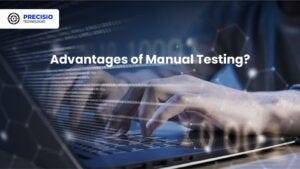
Human Intuition: Software testing professionals can detect kernels through their human cognitive ability that automated tools cannot match. The observation and evaluation of visual elements runs more efficiently through human operatives instead of advanced tools.
Flexibility: This method suits exploratory testing specifically because there are no pre-determined scripts available.
Low Initial Investment: Running this approach does not need tool purchases or applications to develop automation frameworks.
Adaptable for UI/UX Testing: Running this approach does not need tool purchases or applications to develop automation frameworks.
4. Advantages of Automated Testing
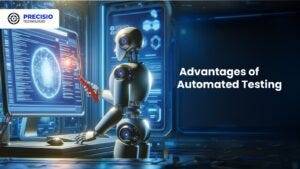
Speed: Executes repetitive tests much faster than humans.
Scalability: The system proves most effective for extensive projects that need constant system updates.
Accuracy: When performing recurring actions, automated systems minimize the chances of human mistakes.
Cost-Efficient in the Long Run: Once established and implemented, the system demands costly investments but ensures continuous development expenses decrease over time.
Better for CI/CD Pipelines: Such testing technology connects various development pipelines that support agile and DevOps methodologies.
5. Disadvantages of Manual Testing

Time-Consuming: The manual performance of repeated tests leads to delayed completion of projects.
Error-Prone: Large applications contain tiny bugs that human testers commonly fail to detect.
Not Ideal for Scalability: The process of increasing manual testing needs additional testers to avoid cost escalations.
6. Disadvantages of Automated Testing

Initial Costs: Organizations must provide high financial resources to procure testing tools together with developing programming constructs.
Limited to Pre-Defined Scenarios: These testing approaches work poorly for handling exploratory or ad hoc testing.
Requires Maintenance: Test scripts need frequent updates when application changes occur.
Not Suitable for UI/UX Testing: Struggles with subjective user experience evaluations.
7. When to Use Manual Testing
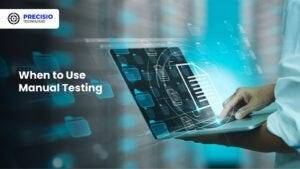
Small Projects: The testing method proves beneficial at a low cost for small applications and provides quick assessments.
Exploratory Testing: Testing this approach benefits projects whose scripts have not been defined yet or need evaluation for newly added features.
Visual and Usability Testing: Performing assessments on interface components together with design features.
8. When to Use Automated Testing
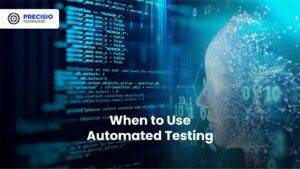
Large Projects: Handles scalability for projects with frequent updates.
Regression Testing: Program testing becomes more efficient through automation since automated assessments perform multiple tests following each update process.
Performance Testing: The system performs efficient capabilities to conduct load testing and stress testing.
Continuous Development Environments: Agile progression and DevOps implementations need automation as a core requirement.
READ MORE- https://www.precisio.tech/automated-testing-vs-manual-testing-which-one-is-right-for-your-project/
2 notes
·
View notes
Text
Lean vs. Waterfall Business Models: Choosing the Right Approach for Your Venture

When starting or scaling a business, one of the most critical decisions you’ll make is choosing the operational approach that aligns with your goals, resources, and industry demands. Two popular frameworks that often guide entrepreneurs are the Lean and Waterfall business models. Understanding their principles, advantages, and challenges can empower you to select the model that best suits your vision and market.
What is the Lean Business Model?
The Lean business model prioritizes efficiency, adaptability, and continuous improvement. It focuses on creating value for the customer while minimizing waste. Inspired by lean manufacturing principles, particularly those pioneered by Toyota, this model has become a cornerstone of modern startups and innovation-driven enterprises.
Key Principles of the Lean Model:
Validated Learning: Experimentation and customer feedback drive product and process development.
Build-Measure-Learn Cycle: Rapid prototyping allows for iterative improvements.
Customer-Centric Approach: Emphasis on understanding and addressing customer needs.
Waste Reduction: Eliminating activities and resources that don’t add value.
Advantages of Lean:
Cost Efficiency: By focusing on essential features and avoiding overproduction, businesses conserve resources.
Flexibility: Quick pivots are possible when market demands or customer preferences shift.
Speed to Market: Minimal Viable Products (MVPs) enable businesses to launch quickly and refine over time.
Challenges of Lean:
High Uncertainty: Iterative processes may result in unpredictability.
Resource Intensity: Constant feedback loops and adjustments require dedicated time and effort.
Scalability Issues: Lean is ideal for early-stage businesses but may need adaptation for large-scale operations.
What is the Waterfall Business Model?
The Waterfall business model, rooted in traditional project management, follows a linear and sequential approach. This model is structured around defined stages, where each phase must be completed before moving to the next. While it originated in industries like construction and software development, it’s also applicable to businesses requiring meticulous planning and execution.
Key Principles of the Waterfall Model:
Sequential Progression: Projects move from concept to completion in defined steps.
Detailed Documentation: Comprehensive plans, budgets, and timelines are created upfront.
Defined Deliverables: Clear milestones ensure all tasks are completed in order.
Stability: A fixed plan minimizes changes during the process.
Advantages of Waterfall:
Predictability: Clear timelines and budgets enhance planning and stakeholder confidence.
Quality Assurance: Extensive documentation ensures thorough testing and evaluation.
Ease of Implementation: Ideal for projects with well-defined requirements.
Challenges of Waterfall:
Rigidity: Limited flexibility to adapt to changing market conditions.
Delayed Feedback: Customer input often comes late, increasing the risk of misalignment.
Time-Intensive: Sequential phases may lead to longer development cycles.
How to Choose Between Lean and Waterfall
The choice between Lean and Waterfall depends on your business’s nature, goals, and industry.
Lean is Ideal For:
Startups and innovative ventures with evolving market demands.
Projects where customer feedback is essential.
Teams prioritizing speed and adaptability.
Waterfall is Ideal For:
Established businesses with fixed goals and budgets.
Industries like construction, healthcare, or manufacturing, where precision is critical.
Long-term projects requiring robust planning.
Conclusion
Both the Lean and Waterfall business models offer unique advantages and come with their own set of challenges. While the Lean model fosters innovation and flexibility, the Waterfall approach ensures stability and predictability. Entrepreneurs should carefully evaluate their project’s scope, resources, and objectives before committing to a framework. By aligning your operational strategy with your business’s needs, you set the stage for sustainable growth and success.
2 notes
·
View notes
Text
PeopleSoft Cedar Consulting: Revolutionizing Enterprise Solutions with Expertise and Innovation
In the world of enterprise software solutions, PeopleSoft remains a key player, providing organizations with robust tools for managing human resources, finances, supply chains, and more. However, to fully harness the power of PeopleSoft and tailor it to a company's unique needs, businesses often turn to specialized consulting services. One such provider making waves in this space is Cedar Consulting, a firm that offers top-tier expertise in PeopleSoft and helps organizations optimize their use of this powerful software suite.
Understanding PeopleSoft: A Quick Overview
PeopleSoft, originally developed by PeopleSoft Inc., is a comprehensive suite of applications that help businesses manage a variety of operations, from human resource management to financials, supply chain management, and customer relationship management. PeopleSoft has evolved over time, being acquired by Oracle in 2005, but it remains one of the most widely used ERP (Enterprise Resource Planning) solutions worldwide.
Organizations across various sectors continue to rely on PeopleSoft for its scalability, flexibility, and advanced features. However, to ensure that the platform is implemented effectively and aligns with specific business goals, PeopleSoft consulting has become a critical component for success.
What Makes Cedar Consulting Stand Out?
Comprehensive PeopleSoft Services Cedar Consulting offers a wide range of services centered around PeopleSoft, including:
Implementations: Cedar assists organizations in smoothly deploying PeopleSoft applications, ensuring that the systems are configured to meet specific organizational requirements.
Upgrades: As PeopleSoft continually evolves, businesses need to stay up to date with the latest versions and features. Cedar provides seamless upgrade services to help clients transition to newer versions without disrupting business operations.
Customization and Configuration: Cedar’s experts understand that each business has unique needs. They customize PeopleSoft applications to ensure they work optimally for individual clients, improving functionality and integration with other systems.
Support and Optimization: Cedar’s consultants offer ongoing support to help businesses maximize their PeopleSoft investments, addressing issues as they arise and optimizing system performance over time.
Integration: PeopleSoft often needs to integrate with other enterprise systems. Cedar provides integration services to ensure smooth data flow and seamless operations across different software platforms.
Expert Knowledge and Experience Cedar Consulting distinguishes itself through its team of professionals with extensive PeopleSoft experience. Whether it's implementing new PeopleSoft modules, upgrading existing systems, or troubleshooting complex technical issues, Cedar’s consultants bring a wealth of expertise to the table. This deep knowledge ensures that clients receive not only a working solution but one that is efficient, scalable, and cost-effective.
Tailored Solutions One of Cedar Consulting's core strengths is its ability to provide customized solutions. They take the time to understand the unique challenges faced by each client and design strategies that align with specific business objectives. Cedar is particularly adept at making complex PeopleSoft systems more user-friendly and efficient, helping businesses achieve their full potential.
Proven Track Record of Success Cedar Consulting has built a reputation for delivering results. Their success stories span a wide range of industries, from higher education and healthcare to financial services and government. Organizations trust Cedar for their proven ability to optimize and enhance PeopleSoft systems, driving both operational efficiency and strategic growth.
Focus on Long-Term Relationships Cedar Consulting is not just about implementing a system and walking away. Their approach centers on building long-term relationships with clients. They provide ongoing support and consulting, ensuring that PeopleSoft systems continue to meet the evolving needs of the business. This commitment to customer success is what makes Cedar a preferred consulting partner for many organizations.
Benefits of Partnering with Cedar Consulting for PeopleSoft Solutions
Enhanced Efficiency and Productivity Cedar’s deep expertise ensures that businesses get the most out of their PeopleSoft systems, helping streamline workflows and improve productivity. Whether it’s simplifying user interfaces or automating routine tasks, Cedar’s solutions enable organizations to operate more efficiently.
Reduced Costs By optimizing the existing PeopleSoft system, Cedar helps businesses reduce operational costs. Moreover, their experience with system upgrades and integrations ensures that businesses avoid costly mistakes and delays in deployment.
Scalability and Flexibility Cedar Consulting’s solutions are designed to scale with the organization as it grows. Their custom solutions ensure that businesses can add new functionalities or integrate with new systems as needed, without requiring major overhauls.
Improved Decision-Making Cedar’s data-driven approach helps organizations leverage PeopleSoft’s robust reporting and analytics features. By improving access to critical data, businesses can make more informed decisions, whether it’s about financial planning, human resources, or supply chain management.
Ongoing Support Cedar Consulting provides continuous support to its clients, ensuring that their PeopleSoft systems stay up to date, secure, and effective over time. This proactive support helps organizations avoid costly downtime and disruptions.
Conclusion
As businesses continue to navigate the complexities of modern enterprise operations, the need for specialized PeopleSoft consulting services becomes ever more apparent. Cedar Consulting has established itself as a trusted partner for organizations seeking to unlock the full potential of their PeopleSoft systems. With a focus on tailored solutions, expert knowledge, and long-term customer success, Cedar Consulting stands out as a leader in the PeopleSoft consulting space, driving operational efficiency and delivering lasting value for clients.
#amazon web services#amazon sierra#oracle cloud consulting#aws cloud consultant#oracle consulting services#oracle public sector cloud#managed cloud services#oracle consulting#peoplesoft aws hosting#top oracle implementation partners
2 notes
·
View notes